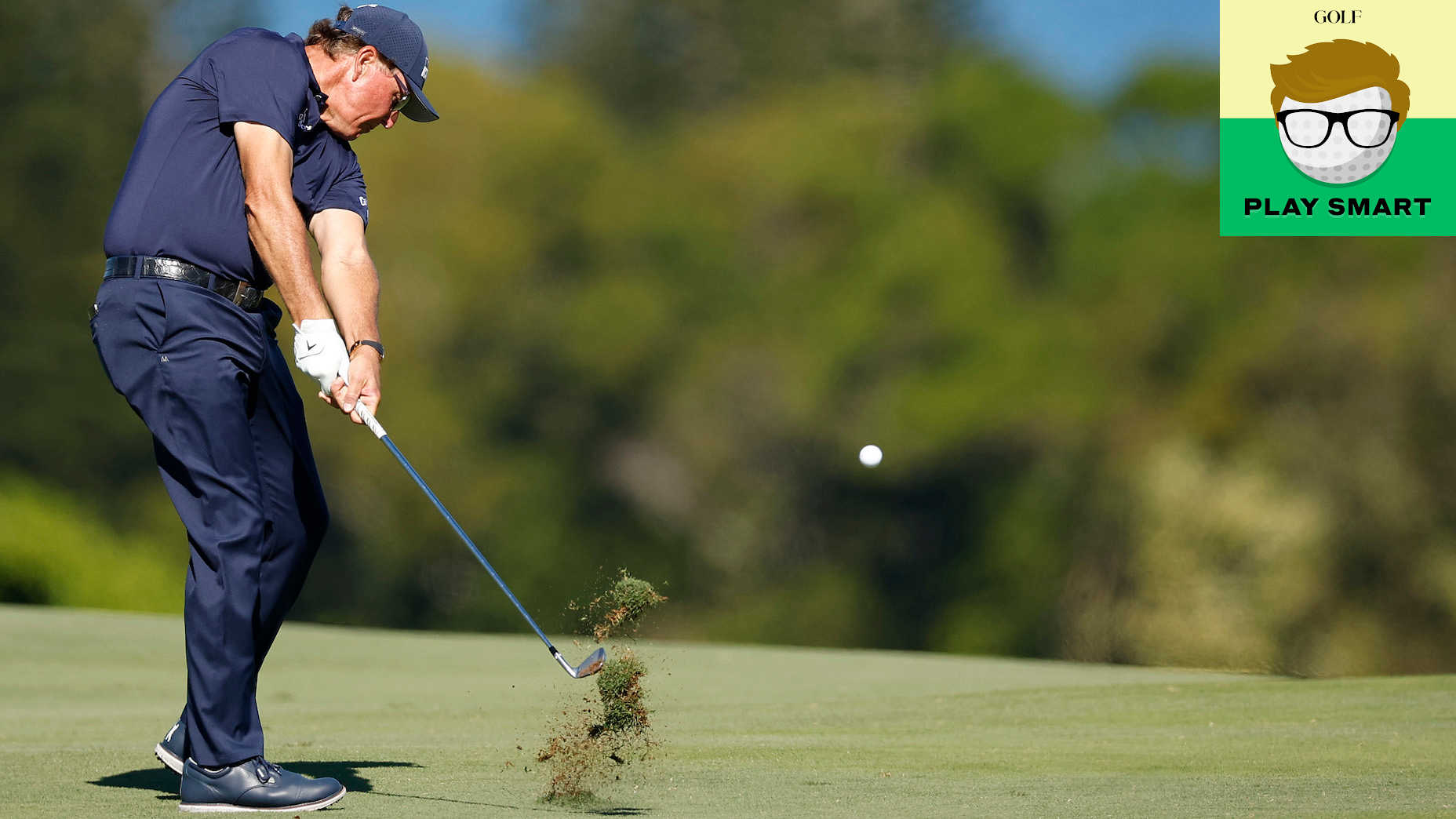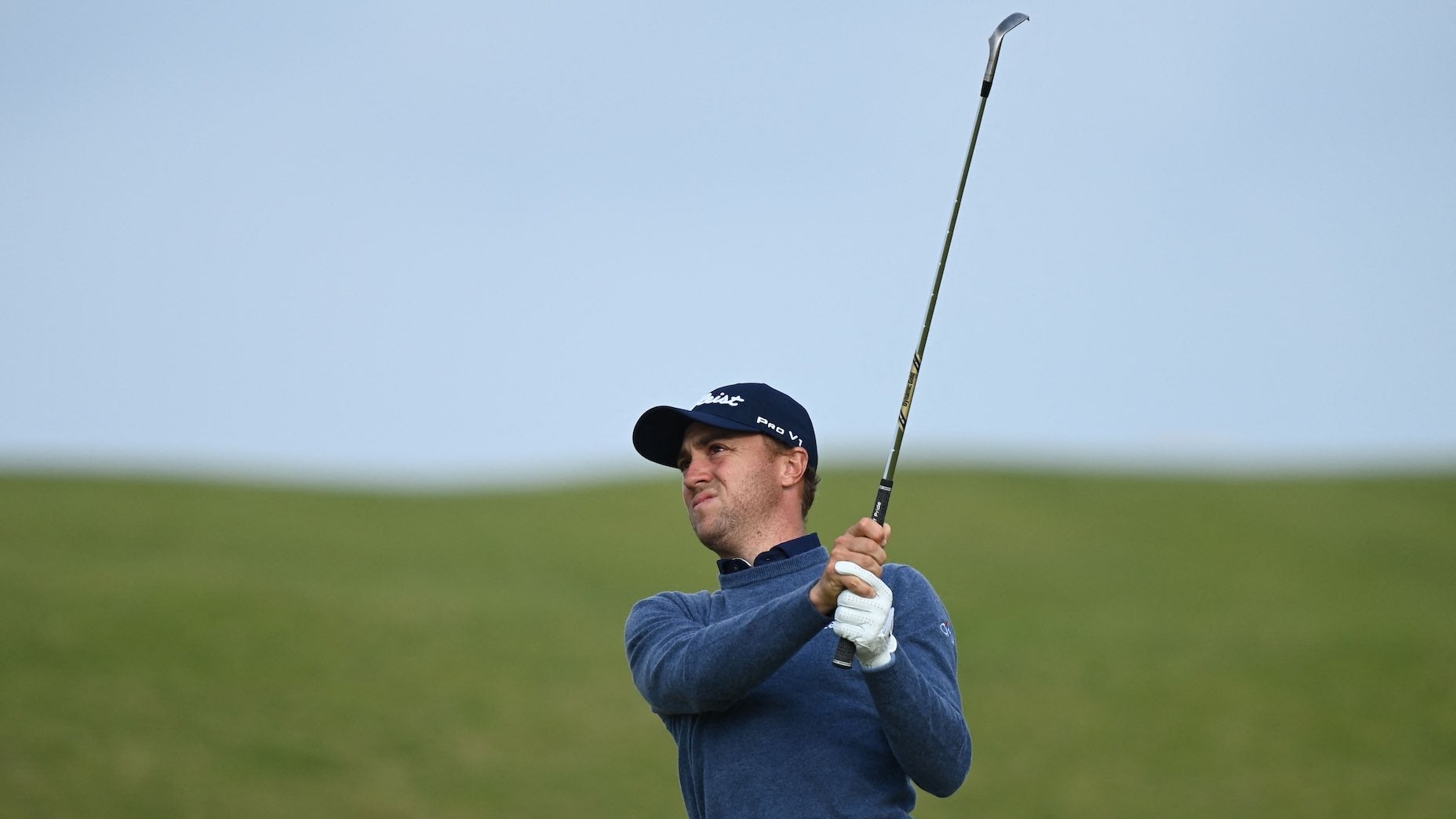Golf Logo
Why every golfer should do this to improve their wedges
SHARE
- Share on Facebook
- Share on Twitter
- Share by Email
Revealed! Top 100 Courses You Can Play for 2024-25
Browse ranking here
Don't think you're not good enough to groove different swings with your wedges.
Getty Images
Welcome to Play Smart, a game-improvement column that drops every Monday, Wednesday and Friday from Game Improvement Editor Luke Kerr-Dineen to help raise your golf IQ and play smarter, better golf.
I was talking to a teacher the other day who made a simple, fundamental observation — the kind of observation that’s so obvious it typically gets overlooked.
“When you look at golfers who struggle to break 100, or 90, they’re hitting about one, maybe two, greens per round,” says Devan Bonebrake, a GOLF Teacher to Watch and host of GolfPass show The Golf Fix. “They’re using their wedge on almost every hole. They really need to learn to get good at wedging it.”
Often, when a high handicapper gets a chance to spend an hour or two practicing, they’ll head straight to the range. They’ll rip driver, pump 7-irons into the wide-open space, maybe hit a few putts if there’s time. Instead, you could make the case they should head to the chipping green and learn to master shots with one of the clubs they’ll be hitting the most.
So in today’s Play Smart, we’re going to highlight a way to help you do exactly that, with some advice that I hear pop up all the time.

When Dustin Johnson set about improving his wedges, he implemented a simple idea: Make a soft, medium, and hard swings with each of your wedges, measure the distances for each, and then work on honing them.
That’s the backbone of a good wedge game: learning how to hit different distances with the same same club. And there’s lots of different ways you can do that.
If you’re more technical, you can implement a clock system like Dave Pelz suggests, where the length of your backswing varies based on hands of a clock. Or, like DJ, you can stick to soft, medium, or hard. An interesting recent article from coach Stephen Arnold suggests having four swings with each club: A quarter, half, full, and all-out swings. Whatever variation you choose, you want to shorten the speed of your swing by shortening or lengthening the backswing, not decelerating.
Once you get your different swings sorted, it’s a matter of calling the correct swing up at the same time. Johnson says he used to have his coach call out different numbers on the range and then he’d try to hit them. For you, it could be as simple as hitting to different targets with the same club on the driving range, which is a proven method of improving your practice.
Spend a few focused minutes dialing in your wedges each time you’re on the range and you’ll find life instantly easier when you get on the course.

Golf.com Contributor
Luke Kerr-Dineen is the Game Improvement Editor at GOLF Magazine and GOLF.com. In his role he oversees the brand’s game improvement content spanning instruction, equipment, health and fitness, across all of GOLF’s multimedia platforms.
An alumni of the International Junior Golf Academy and the University of South Carolina–Beaufort golf team, where he helped them to No. 1 in the national NAIA rankings, Luke moved to New York in 2012 to pursue his Masters degree in Journalism from Columbia University. His work has also appeared in USA Today, Golf Digest, Newsweek and The Daily Beast.